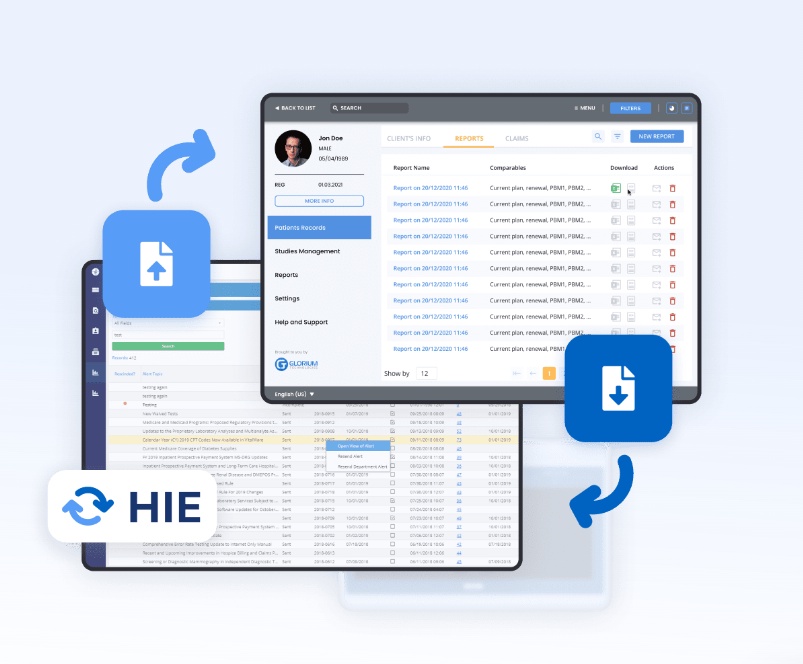At our company, we understand the importance of Health Information Exchange (HIE) software development in today's healthcare landscape. As technology continues to advance, healthcare providers are seeking efficient ways to exchange patient information securely and seamlessly. In this comprehensive guide, we delve into the intricacies of HIE software development, its significance in healthcare, key features, and how it can revolutionize the industry.
Understanding HIE Software Development
Health Information Exchange (HIE) software facilitates the electronic sharing of healthcare information among various healthcare organizations. It allows for the exchange of patient data such as medical history, laboratory results, medications, and imaging reports in a standardized and secure manner. HIE software development involves creating robust platforms that enable healthcare providers to access and exchange vital patient information efficiently.
Significance of HIE Software in Healthcare
In today's interconnected healthcare ecosystem, HIE software plays a crucial role in improving patient care, enhancing care coordination, and reducing medical errors. By providing healthcare professionals with access to comprehensive patient information in real-time, HIE software enables informed decision-making, leading to better patient outcomes. Additionally, HIE software promotes interoperability among different healthcare systems, fostering seamless data exchange and collaboration.
Key Features of HIE Software
1. Interoperability
HIE software is designed to ensure interoperability, allowing disparate healthcare systems to communicate and exchange data seamlessly. Through standardized protocols and data formats, HIE software enables the integration of electronic health records (EHRs), laboratory systems, imaging systems, and other healthcare applications.
2. Data Security and Privacy
Security and privacy are paramount in healthcare, and HIE software prioritizes the protection of patient information. Robust encryption techniques, access controls, and authentication mechanisms safeguard sensitive data, ensuring compliance with regulatory requirements such as HIPAA (Health Insurance Portability and Accountability Act).
3. Scalability
Scalability is essential in HIE software development to accommodate the growing volume of healthcare data and the increasing number of participating organizations. Scalable architectures allow HIE platforms to expand seamlessly while maintaining performance and reliability.
4. Real-time Data Exchange
HIE software facilitates real-time data exchange, enabling healthcare providers to access up-to-date patient information when making clinical decisions. Real-time notifications and alerts ensure timely communication of critical information, enhancing patient safety and care coordination.
How HIE Software Revolutionizes Healthcare
Improved Care Coordination
HIE software streamlines communication and collaboration among healthcare providers, leading to improved care coordination and continuity. By providing a comprehensive view of a patient's medical history and treatment plan, HIE software reduces duplicate tests, prevents medication errors, and enhances the overall quality of care.
Enhanced Patient Engagement
HIE software empowers patients to actively participate in their healthcare journey by giving them access to their medical records and enabling secure communication with their healthcare providers. Patient portals integrated into HIE platforms allow patients to view test results, schedule appointments, and manage their health information conveniently.
Efficient Public Health Reporting
HIE software plays a vital role in public health reporting by facilitating the timely and accurate submission of data to public health agencies. By automating the reporting process and ensuring data accuracy, HIE software enables early detection of disease outbreaks, monitoring of population health trends, and implementation of targeted interventions.
Cost Savings
By reducing redundant tests, avoiding adverse events, and improving operational efficiency, HIE software contributes to significant cost savings for healthcare organizations. By streamlining administrative processes and minimizing paper-based workflows, HIE software reduces overhead costs and enhances revenue cycle management.
Conclusion
In conclusion, HIE software development is instrumental in transforming the healthcare industry by promoting interoperability, improving care coordination, enhancing patient engagement, and enabling efficient public health reporting. As healthcare continues to evolve, investing in robust HIE software solutions is essential for driving innovation, improving patient outcomes, and delivering high-quality care.


No comments yet